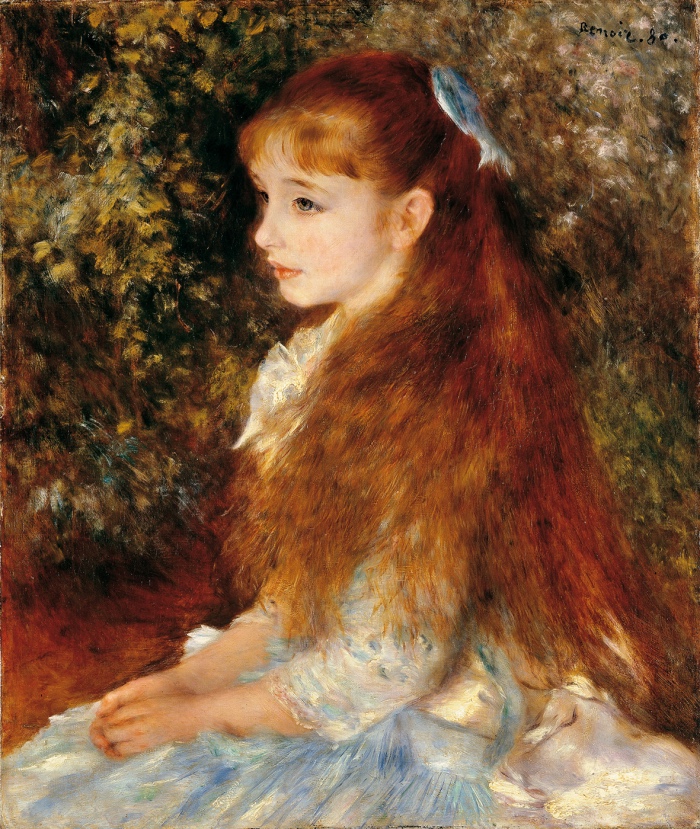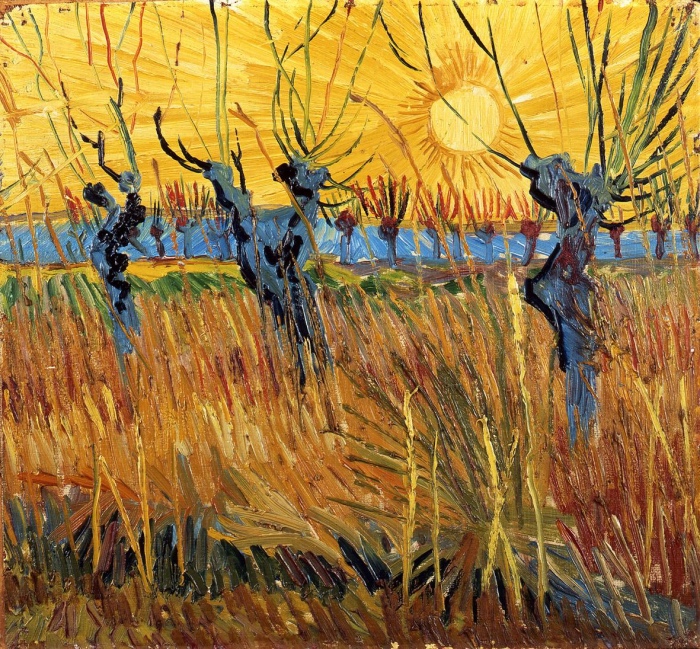History of impressionism in Treviso

Claude Monet, The cliffs at Etretat, 1885.
Storie dell’Impressionismo a Treviso (history of impressionism in Treviso)
Exhibition dedicated to Impressionism in Treviso. In a few months Treviso will host an exhibition dedicated to Impressionism which will bring to Italy 120 works with the aim of illustrating the history of Impressionism through its artists.
On view works by Manet, Degas, Renoir, Monet, Pissarro, Sisley, Toulouse Lautrec, Van Gogh, Gauguin, Seurat and many more. It’s an exhibition you can’t miss!
The exhibition will illustrate the period between the 19th century and the early 20th century and will put on display works by the greatest artists of Impressionism.
You will probably think that there are too many exhibitions devoted to Impressionism, but I can assure you that this one will be different, as I will explain in this post.

Claude Monet, Haystacks, 1891.
The exhibition “History of Impressionism” is conceived and curated by Marco Goldin, who will return to Treviso after successful exhibitions arranged in northern Italy and after his success in bringing to Italy “Girl with a Pearl Earring”, one of the first exhibitions I told in my blog. Actually, I have visited all the exhibitions Goldin curated (the latest one was the exhibition dedicated to nocturnals in art “Tutankhamon Caravaggio Van Gogh. Evening and Nocturnals from the Ancient Egyptians to the 20th Century”), and I have always appreciated the way he interprets an exhibition.
His exhibitions made history, despite criticism from the academic world, because they proved that reducing the gap between visitors and art is possible, by dusting the rooms of an exhibition down in order to reveal stories and beauty a masterpieces can express, conveying emotions, passion and desire for knowledge.
The exhibition devoted to Impressionism in Treviso will drive the visitors through a journey to discover the origins, development and transformation of this artistic movement.
The exhibition will be divided into 9 sections, and will start from the greatest masterpieces of the academic painting by Ingres and Bouguerau, and then it will focus on the success of Impressionist painters until the final phase of this season, that actually will see the dawn of a new beginning, with Cézanne as forerunner of Picasso’s Cubism and of the 20th century avant-gardes.
Sections of the exhibitions
- Ingres e il ritratto. Il Salon e L’Accademia dell’ Ottocento (Ingres and the portrait. The Salon and the Academy of the 19th century) – Romanticism is the protagonist of a classical style and in this climate the Impressionist revolution spreads.
- La scuola di Barbizon e la natura nuova (The School of Barbizon and the new nature) – A new way to see the world, and nature manages to make a way for itself and images have a new light.
- Il paesaggio fotografato in Francia (The photographed landscape in France) – The invention of photography, the competition between photograph and painting.
- La nascita dell’Impressionismo e la sua affermazione (The birth of Impressionism and its success) – Everyday life becomes protagonist in paintings by the greatest masters of Impressionism.
- L’Impressionismo in pericolo, gli anni Ottanta (Impressionism in danger, the 1880s) – The split between the group of Realist painters whose leading figure was Degas, and the group of plein-air painters, the painting inaugurated by Monet, which will bring the father of Impressionism to abstract painting.
- Monet dalla crisi del plein air alle ninfee. Dalla realtà allo spazio interiore (Monet from the crisis of plein air painting to Water Lilies. From the reality to inner space) – Monet is the artist who throws into crisis Impressionism and replaces the vision of reality with the vision of inner life, transforming the landscape into a psychological representation.
- I ciliegi fioriscono. L’Impressionismo e l’amore per il Giappone (Cherry trees in blossom. Impressionism and its love for Japan) – Japanese culture and its influence on Impressionism.
- Il caso Van Gogh (The case Van Gogh) – A brilliant artist and how his contemporaries didn’t understand him. About 10 paintings showing the relationship between the artist and the group of Impressionists.
- Fine dell’Impressionismo. Cézanne e i suoi anni estremi (End of Impressionism. Cézanne and his extreme years) – Impressions become geometric shapes. The world has changed and now is ready for avant-gardes and Picasso’s Cubism.
Since last year Treviso has come out of its cultural stupor.
In autumn 2015, after over 10 year of renovation, the Museo Bailo reopened with its own collections. And two important exhibitions took place: the exhibition dedicated to El Greco made of discoveries and surprises which I attended together with you in two different events, and also the exhibition devoted to Escher at the Museum of Santa Caterina.
The renovated Museum of Santa Caterina in Treviso will host the exhibition dedicated to Impressionism, which will be only the main show of a rich cultural programme.
Other exhibitions planned from October 29th to April 17th 2016
– “Tiziano Rubens Rembrandt. L’immagine femminile tra Cinquecento e Seicento. Tre capolavori dalla Scottish National Gallery di Edimburgo”. (Titian Rubens Rembrandt. The female image between the 16th century and the 17th century. Three masterpieces on loan from the Scottish National Gallery of Edinburgh).
– “Da Guttuso a Vedova a Schifano. Il filo della pittura in Italia nel secondo Novecento”. (From Guttuso to Vedova to Schifano. The thread of Italian painting during the second half of the 20th century).
– “De Pictura. 12 pittori in Italia” (De Pictura. 12 painters in Italy).

Pierre Auguste Renoir, Mademoiselle Irène Cahen d’Anvers (La piccola Irene), 1880

Vincent van Gogh, Willows pruned at sunset, 1888.
INFO
Storie dell’Impressionismo “History of Impressionism”
Treviso, Museo di Santa Caterina
October 29 ottobre, 2016 – April 17 aprile, 2017
LINK
http://www.lineadombra.it/ita/
Follow me on:
About me
In this blog, I don't explain the history of art — I tell the stories that art itself tells.


